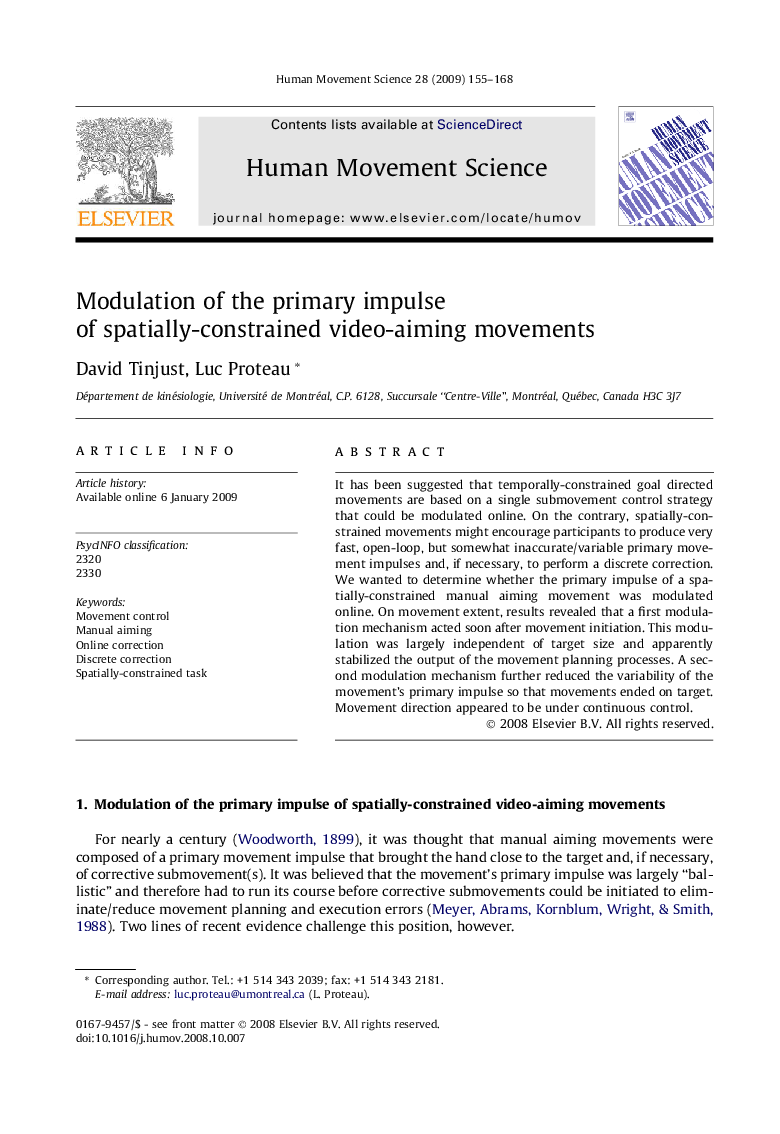| Article ID | Journal | Published Year | Pages | File Type |
|---|---|---|---|---|
| 928830 | Human Movement Science | 2009 | 14 Pages |
It has been suggested that temporally-constrained goal directed movements are based on a single submovement control strategy that could be modulated online. On the contrary, spatially-constrained movements might encourage participants to produce very fast, open-loop, but somewhat inaccurate/variable primary movement impulses and, if necessary, to perform a discrete correction. We wanted to determine whether the primary impulse of a spatially-constrained manual aiming movement was modulated online. On movement extent, results revealed that a first modulation mechanism acted soon after movement initiation. This modulation was largely independent of target size and apparently stabilized the output of the movement planning processes. A second modulation mechanism further reduced the variability of the movement’s primary impulse so that movements ended on target. Movement direction appeared to be under continuous control.
